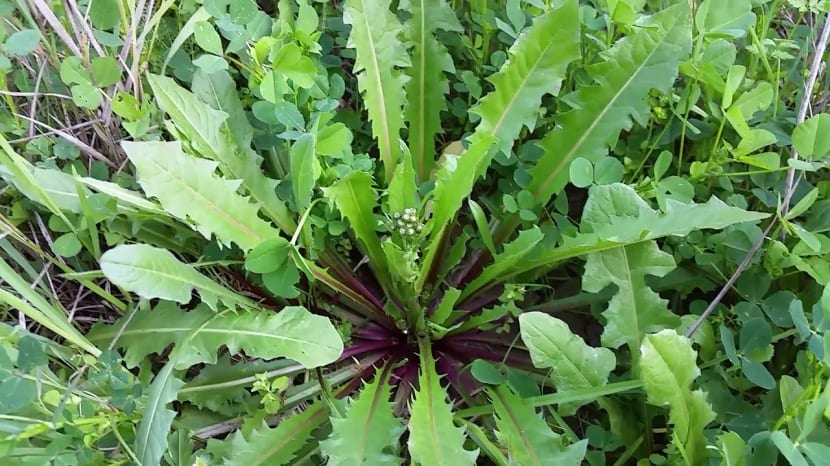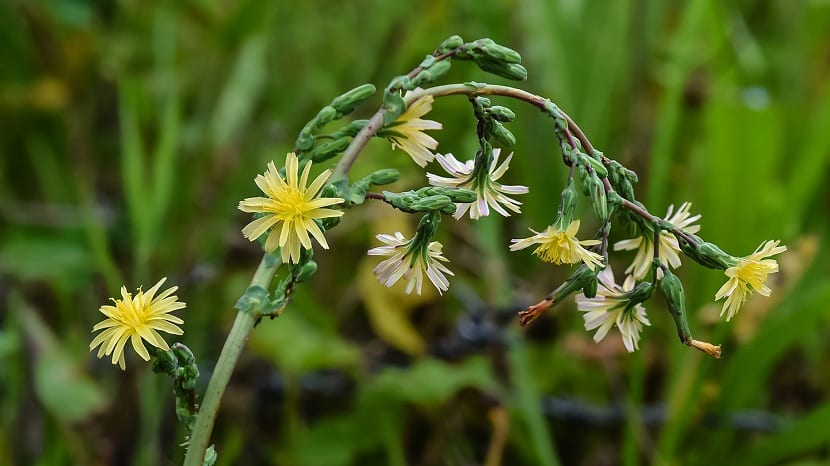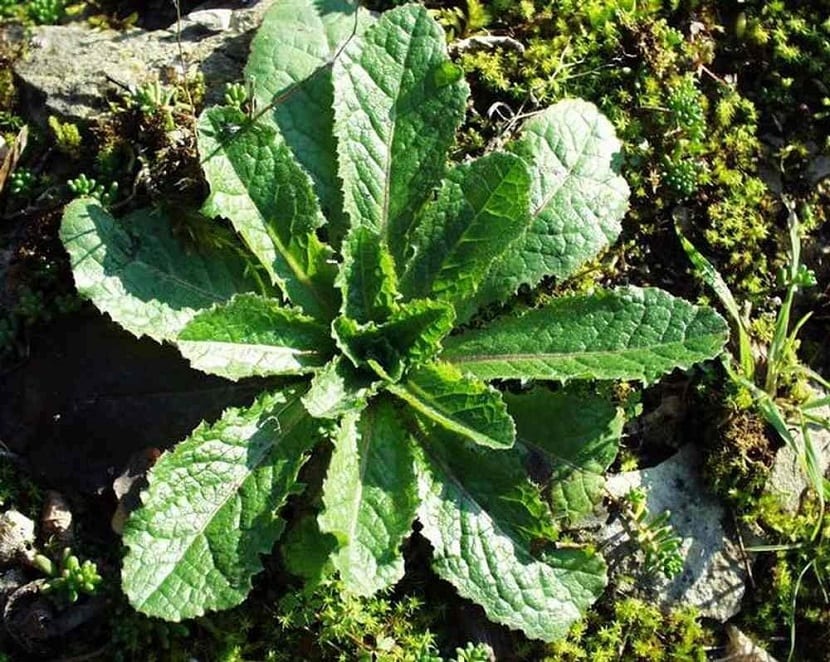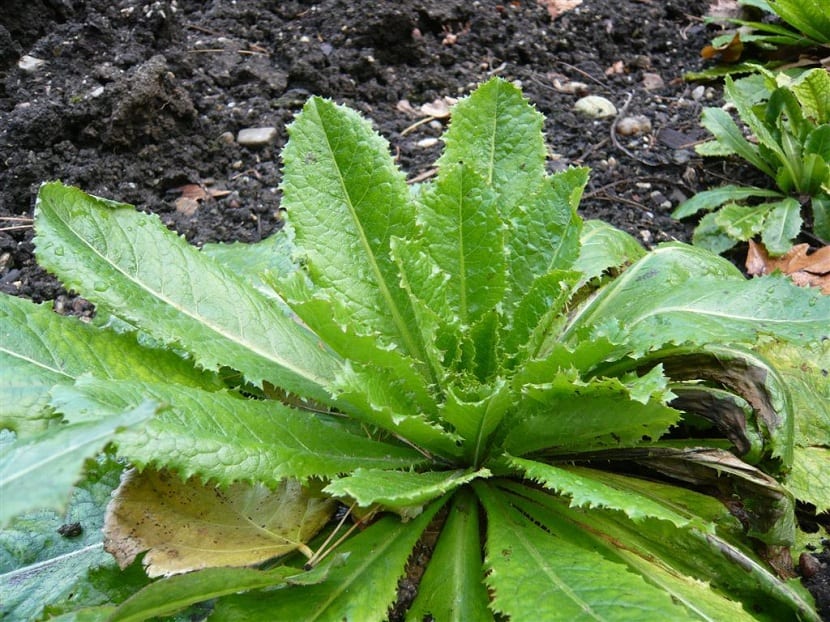
In some rural areas of Spain and France there is still a tradition that consists of drinking wild lettuce infusion. The scientific name of this plant is lactuca virosa and it contains substances with sedative effects with structure and activity similar to opium but less potent. In contrast, the consumption of this infusion is not prohibited and does not provoke consumption habits. These same substances can be found in common lettuce that we use in salads, although in smaller quantities.
In this article we are going to talk about the characteristics and properties of the lactuca virosa.
Key features

It is a plant native to southern Europe, North Africa and Turkey. After being cultivated in the past for medicinal purposes and for the manufacture of lactucarium, this plant has been acclimatizing and adapting to climates throughout Europe. To use it, they waited until the plant had flowered. It is then that various cuts were made in the stem from top to bottom so that the milk from the wounds could ooze out. This substance was collected in small basics that were then poured onto a wooden board. It is on this board that it dried and hardened. Next, the lactucarium formed was kneaded to form balls of 30 grams. and it was used as a narcotic to help calm coughs and induce sleep.
Another use of wild lettuce was as an anesthetic in surgeries. However, with the passage of time the crops of this plant were abandoned in almost all areas of Europe except France. In this country there are companies that sell and grow sacks of these dried leaves and stems. In our peninsula we can find it naturally in roadsides across the north both on highways and on the edges of fields. We can also find them in the south although this is less frequent but has a greater effect. This is because it has a higher concentration of active ingredients.
lactuca virosa to sleep and dream

One of the immediate effects that wild lettuce has is the calm of nervousness. For people who are continuously restless and have mild insomnia, the consumption of an infusion of this plant can help induce sleep. Other effects that are also sought from the use of this plant is to reduce coughs. The main difference between this plant and opium is that it does not cause constipation, vasomotor disorders or loss of appetite. Even if this plant is used for a long time, it will not be harmful.
It has a mild or narcotic effect that induces light sleep and can be measured with an EEG. It not only helps induce sleep, but also produces numerous dreams during REM phase There are beliefs like that of the Hopi Indians who believe that these dreams contain a lot of information about reality and that it can help in the day to day. This belief stems from the great importance they give to dreams. The main function of dreams is to be able to combine both new and old experiences to create new attitudes that affect the future. For this reason, these Indians make a kind of diary in which they write their dreams and review them once a week to join stories.
The peasants who still make infusions with the lactuca virosa They do it as follows: first they put a handful of chopped leaves or stems in a bowl of water. Once everything is mixed, it is brought to a boil. Afterwards, it is trapped with a cloth to rest for ten minutes and everything is filtered so that the broth can be drunk by adding a tablespoon of honey. In this way, an infusion is obtained with effects similar to that of a lime blossom.
Another thing is the concentrated extract of wild lettuce. This concentrate is known as lactucarium and is a dry latex also known as lettuce opium.
Culture and description of the lactuca virosa

To grow this plant you have to take into account some factors that must be met. The first thing is that the soil must be rich in nutrients and not compact. Provided it is watered frequently, it can grow almost anywhere. One of the fundamental factors that the soil must have is good drainage. That is, when watering the soil, do not crowd the water and get puddled. Otherwise, they could end up rotting from the roots.
To sow it, it must be done in rows using trays as a seedbed. Ideally, sow it in mid-September since it is a fairly cold-resistant plant. Once it has developed and does not fit in seedbeds, it must be transplanted with great care. Typically, in about 18 to 25 days most of them are finished.
Wild lettuce is an annual or biannual herbaceous plant that can reach a height of up to two meters. This height is achieved in its second year of life and as long as the care is correct. The leaves at the bottom are larger and are flush with the ground. The lower part of the stem differs from other plants in that it has a purplish hue and small hard hairs. Its flowers are lemon yellow and are in a large bouquet. In each of them we can find between 10 and 20 flowers.
As for its fruits, they are small black seeds capable of flying as if they were a parachute thanks to a tuft of white hairs. It is common to confuse wild lettuce with locksmith. This is because it has the blades divided into wedges while the lock is raised about 4 feet off the ground. Flowering takes place at the end of June.
I hope that with this information you can learn more about the cultivation and the characteristics of the lactuca virosa.
The photos published in this article do not correspond to lactuca virosa. If you wish, I can send you photographs of the lactuca virosa that grows wild on my land, in Patagonia Argentina.
Greetings.